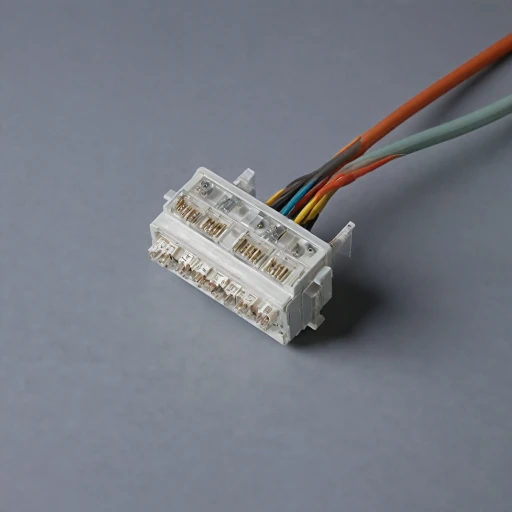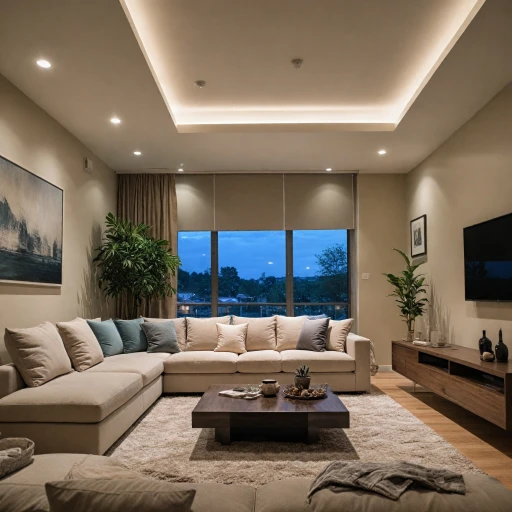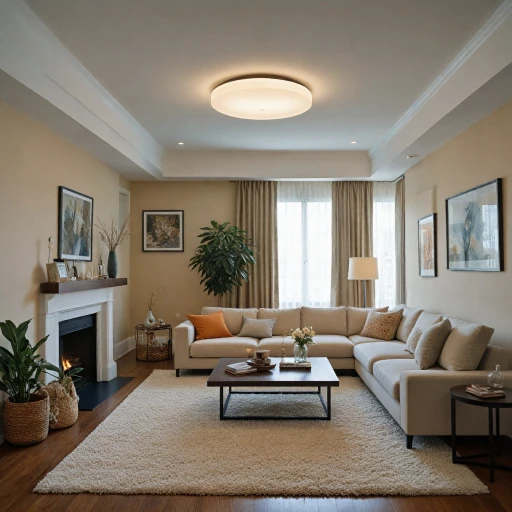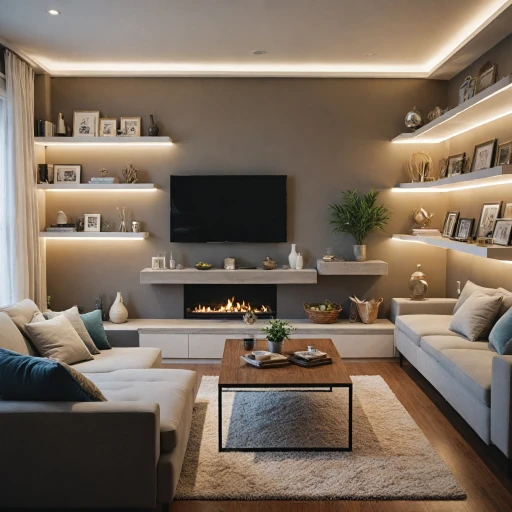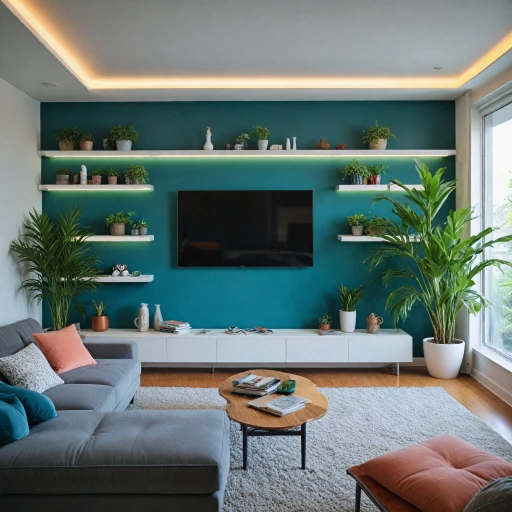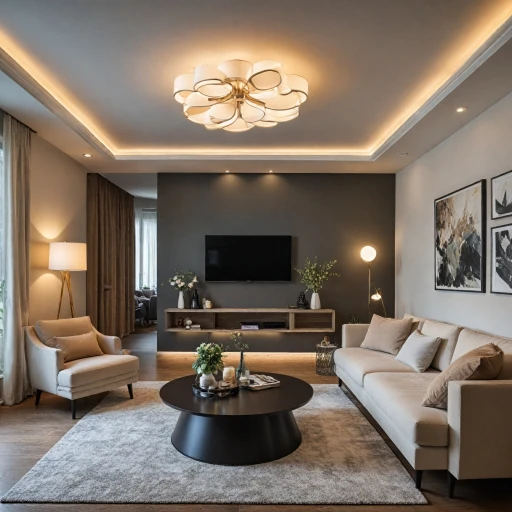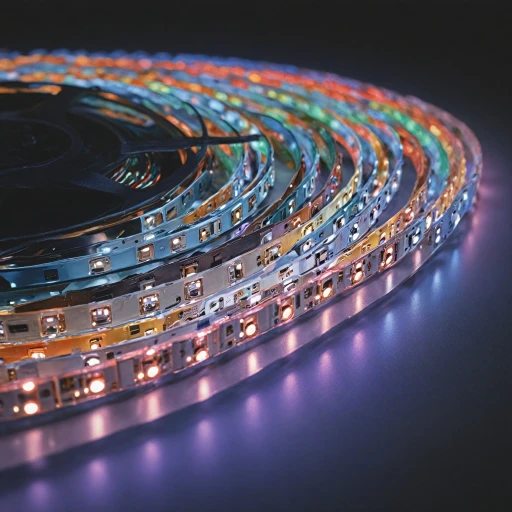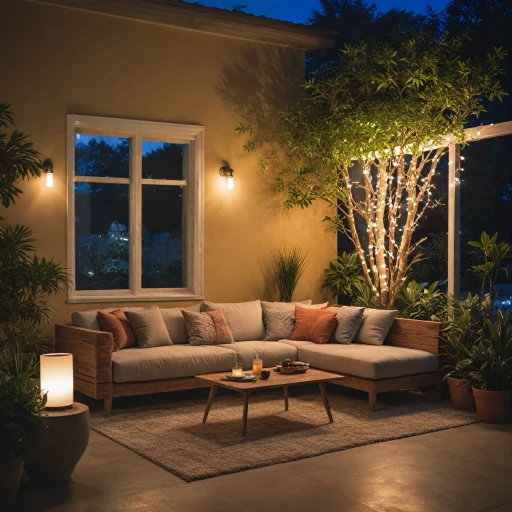
Understanding LED Tape Light Diffusers
What Are LED Tape Light Diffusers?
LED tape light diffusers are essential accessories for any lighting enthusiast looking to achieve a soft and even glow in their spaces. These products serve to diffuse the harshness of direct LED light, creating a more ambient and aesthetically pleasing illumination. A typical LED tape light diffuser is constructed using high-quality materials like silicone or frosted acrylic, which are designed to scatter light evenly across the surface. The core purpose of using a diffuser is to transform the focused beams from the LED strip into a more uniform light output, eliminating sharp contrasts and shadows. This makes diffusing LED strips ideal for applications where gentle lighting is desired. Most diffusers are integrated into a channel system, usually available in materials such as aluminum, which provides structural support and helps in dissipating heat generated by the LED lights. The channel not only protects the strip lights but also enhances the visual appearance, offering options like white or black finishes to fit within any decor style. Additionally, the width of the channel must suitably match the specific LED strip or strip light being used to ensure proper fit and performance. To explore more about how these components can revolutionize your lighting setup, consider learning further about enhancing your space with LED light extensions and how they complement LED tape light diffusers to create the ultimate lighting experience.Benefits of Using LED Tape Light Diffusers
Advantages of Incorporating LED Tape Light Diffusers
LED tape light diffusers offer several compelling benefits that make them a valuable component in modern lighting setups. When integrated into your lighting system, these diffusers can elevate both the aesthetics and functionality of your space.- Enhanced Light Diffusion: Incorporating materials like silicone and frosted surfaces, LED diffusers are designed to soften and spread the light emitted from LED strip lights. This results in a more even light distribution across a wider area, reducing harsh shadows and glare.
- Improved Aesthetic Appeal: LED light strip diffusers are available in a range of designs, including white, black, and other colors, allowing them to seamlessly blend with your décor. With various widths and styles like aluminum channels, these diffusers can be customized to fit the specific design needs of your project.
- Increased LED Longevity: By shielding the strip lights from dust and potential physical impacts, diffusers can contribute to an extended lifespan for your LED lighting products.
- Versatility in Use: Suitable for a diverse range of applications, from home settings to commercial environments, these diffusers can be integrated into ceiling designs, under-cabinet lighting, or as decorative elements in modern interiors.
- Energy Efficiency: Utilizing high-quality LED lighting is inherently energy-efficient, and with a suitable diffuser, the overall lighting system avoids unnecessary power waste by directing light where it's needed most.
Applications in Smart Lighting
Smart Lighting Integration with LED Tape Light Diffusers
Incorporating LED tape light diffusers into smart lighting systems can significantly enhance the ambiance and functionality of any space. These diffusers, often made from materials like silicone or aluminum, are designed to work seamlessly with LED strips, providing a smooth and even distribution of light. This makes them an ideal choice for various smart lighting applications.
One of the key advantages of using LED tape light diffusers in smart lighting is their ability to diffuse LED light effectively. This diffusion reduces glare and creates a more comfortable lighting environment, which is essential for spaces where lighting quality is a priority. Whether you're using white or colored LED strips, the right diffuser can help achieve the desired lighting effect.
Smart lighting systems often rely on LED channels to house and protect LED strips. These channels, available in different widths and finishes like black or frosted, not only enhance the aesthetic appeal but also contribute to the durability of the lighting setup. By choosing high-quality aluminum channels, you ensure that your LED strips are securely mounted and that the light is evenly distributed across the space.
For those looking to create a modern and sleek look, LED neon lights are a popular choice. These lights, when paired with a silicone diffuser, offer a continuous line of light that is both stylish and functional. The flexibility of silicone diffusers allows for creative installations, making them perfect for accent lighting or highlighting architectural features.
When integrating LED tape light diffusers into your smart lighting system, it's crucial to consider the compatibility of the diffuser with your existing setup. This includes checking the width of the LED strips and ensuring that the diffuser can accommodate them. Additionally, selecting the right diffuser material can impact the overall light quality and longevity of the product.
For more insights on optimizing your smart lighting setup, you might find it helpful to explore ensuring optimal performance of your lighting components.
Choosing the Right LED Tape Light Diffuser
Key Considerations for Selecting the Optimal LED Tape Light Diffuser
When choosing the right LED tape light diffuser, several factors come into play to ensure optimal performance and aesthetic appeal. It's essential to understand these variables to maximize the benefits for your specific application.- Material Matters: Diffusers can be made from various materials, primarily including silicone and aluminum. Silicone diffusers offer flexibility and are ideal for applications where curves and bends are involved. Aluminum channels, on the other hand, provide a robust, stable foundation, particularly for straight, linear installations.
- Diffuser Types: Options like frosted or clear diffusers influence how the light is emitted and perceived. A frosted diffuser helps to evenly spread or diffuse LED light, reducing hot spots. Conversely, a clear diffuser allows for brighter, more focused lighting. White and black options are also available to match the aesthetic of your space.
- Width and Design: The width of the diffuser and channel systems needs to correspond with the LED strip in use. Ensure that the strip light fits snugly within the chosen channel. Proper sizing facilitates both installation ease and optimal light diffusion.
- Channel Systems: LED channels, also known as strip channels, come in different profiles and finishes. High-quality aluminum channel systems are popular for their durability and excellent heat dissipation properties.
- Color Consistency and Aesthetic Fit: Consider the color consistency of your LED strips with the diffuser. A diffuser affects the final glow of the strips; it’s important that it complements your intended ambiance, whether you opt for the subtlety of a diffuser white or the sharp contrast of a diffuser black.
Installation Tips for LED Tape Light Diffusers
Steps to Successful Installation
Installing LED tape light diffusers involves a few key steps to ensure optimal performance and aesthetic appeal. Start by deciding the path and length of your LED strip lights; this will help you determine the required length and number of diffusers. Begin by measuring the area where the LED lights will be installed. Consider the width and coverage you desire for the strip channels. Accurate measurements will help you select the right diffuser products, be it silicone or aluminum channels.Choose the Right Materials
Different materials, like aluminum channel or silicone diffuser, provide various levels of flexibility and durability. Aluminum channels offer robust support and efficient heat dissipation, ideal for installations in areas with higher temperatures. Silicone options are versatile and can be shaped to suit corners and curves. Opt for frosted diffusers if you seek to diffuse LED lights for a softer glow.Fitting and Securing the Strips
Secure the LED strips within the chosen channel using adhesive backing or screws, depending on the weight and type of your strip lights. Ensure all strips are aligned correctly, maintaining an even distribution of light. For black or white LED channels, ensure the aesthetic aligns with your existing décor.Applying the Diffuser
Once the channels and strips are prepared, fit the diffuser over the top. Slide or snap the diffuser onto the LED channel, ensuring there are no visible gaps that could disrupt the flow of light. This step is crucial for achieving a smooth, diffused lighting effect.Testing and Adjustments
Test the light strips post-installation to ensure all lights are functioning correctly. Make any necessary adjustments to the positioning of the diffusers and channels to achieve the desired lighting effect. Proper testing prevents any surprises once the full installation is completed. Taking the time to install your LED tape light diffusers with care ensures a high quality lighting solution, enhancing your space’s ambiance, while minimizing maintenance needs.Troubleshooting Common Issues
Overcoming Challenges with LED Tape Light Diffusers
Installing LED tape light diffusers can sometimes present challenges that affect both the aesthetic and functional aspects of your lighting setup. Here are some common issues you might face and practical solutions to address them:
- Uneven Lighting: If you notice inconsistencies in lighting across your LED strip, it may be due to the uneven placement within the diffuser channel. Ensure that your light strips are properly aligned and secured within the aluminum channel or silicone diffuser. Additionally, using a frosted diffuser can help to further diffuse the LED light evenly.
- Diffuser Fit Issues: When installing the diffuser, it should fit snugly over your LED strips. If it feels too tight or too loose, you may need to check the width of the channel against the dimensions of the strip light. Using a high-quality strip channel ensures a better fit and finish.
- Color Discrepancies: Sometimes, differences in light temperature can occur, especially with white or black LEDs. Verify that all led lights are of the same product materials and manufacture. A consistent view of color can be achieved by selecting high-quality diffuser led options.
- Securing the Setup: Make sure that the entire channel system is securely mounted to avoid any disruptions in placement. Use the appropriate mounting hardware for your aluminum or silicone led channels to prevent unwanted movement.
- Section Connection: If using multiple sections of led strips, ensure that connections are properly soldered and insulated. This avoids any flickering or dropout of your strip lights.
= By understanding these potential pitfalls and rectifications, you can optimize the performance and lifespan of your LED tape light diffuser installation. When correctly applied, these solutions not only enhance lighting quality but also contribute to a seamless ambient experience.?>

